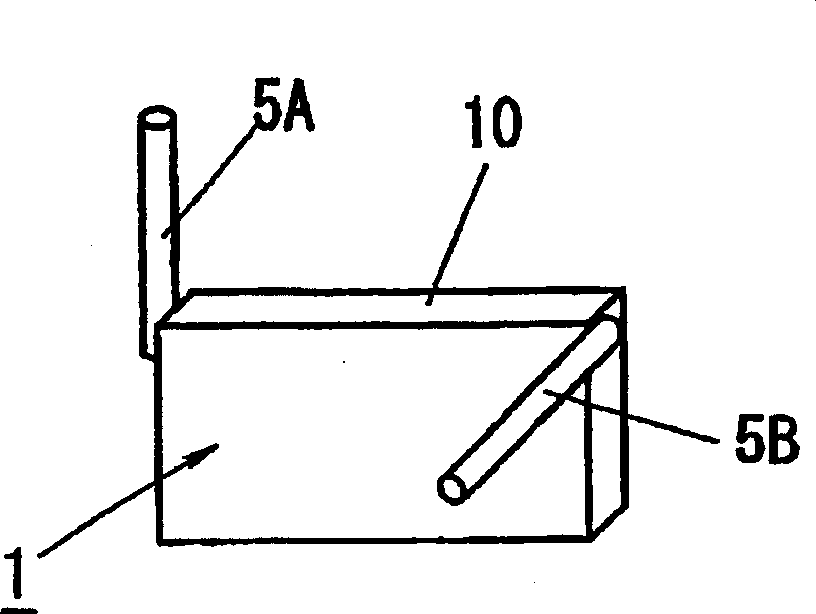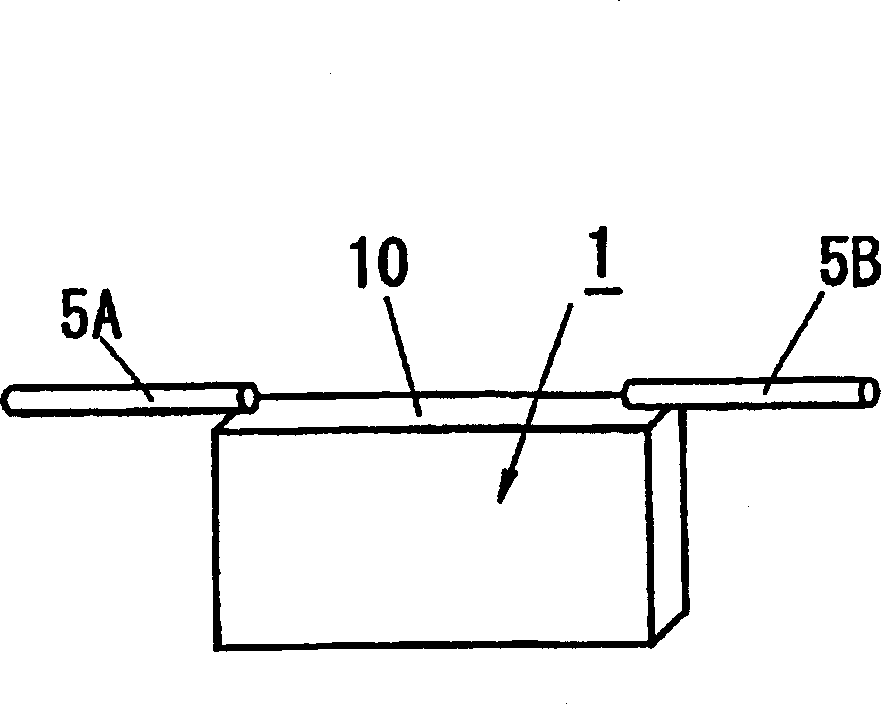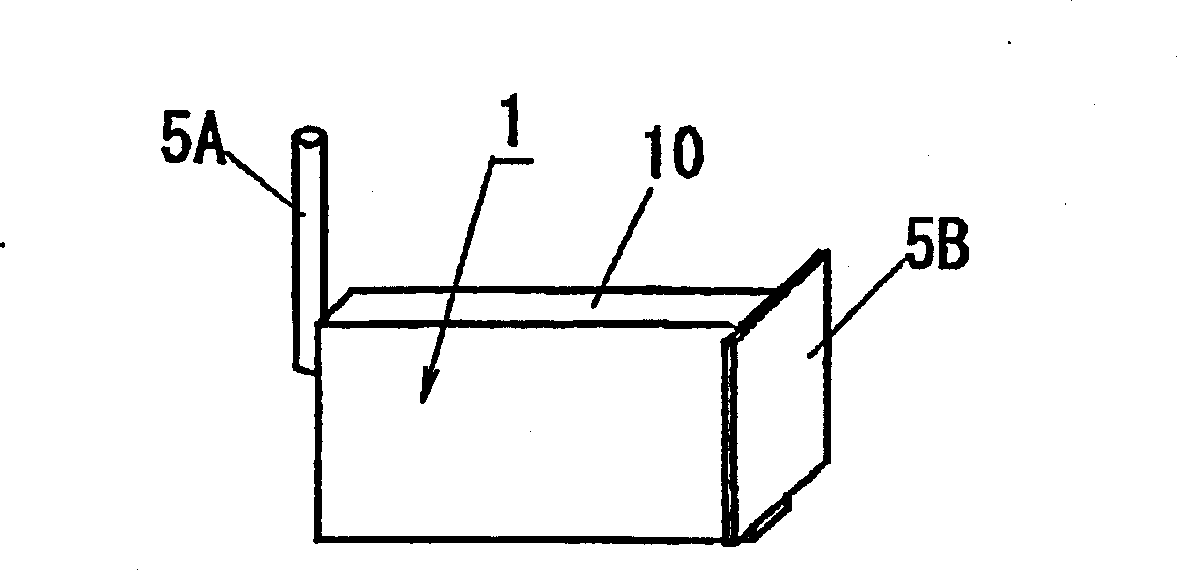Radio relay device
A radio relay and radio communication technology, applied in radio relay systems, active electrical relay systems, radio transmission systems, etc., can solve the problems of complex structures of IF operating systems and RF operating systems, and delays in sending and receiving, reducing Effect of unwanted radiation, improved isolation, the number of lines that can be accommodated, or the effect of increased communication speed
- Summary
- Abstract
- Description
- Claims
- Application Information
AI Technical Summary
Problems solved by technology
Method used
Image
Examples
Embodiment approach 1
[0050] figure 1 The appearance of the radio relay device 1 according to the present embodiment is shown, and it is characterized in that the inside of the device main body 10 and Figure 17 The radio relay device 1 shown is the same, storing dual-system radio equipment parts (not shown), and installing a monopole-type antenna 5A facing the base station and a monopole-type antenna 5A facing the terminal on both sides of the device body 4, respectively. Antenna 5B is used as the antenna device of radio repeater 1, and the antenna 5A facing the base station is connected with the antenna feeding circuit facing the radio equipment part of the base station, and the antenna 5B facing the terminal is connected with the antenna 5B facing the terminal. Connect to the antenna feed circuit of the radio equipment section of the machine.
[0051] Furthermore, in the illustrated example, the polarization surface of the antenna 5A facing the base station is oriented vertically, and the polar...
Embodiment approach 2
[0056] In Embodiment 1, although an antenna device is used in which the polarization plane of the antenna 5A facing the base station and the polarization plane of the antenna 5B facing the terminal are different, the present embodiment is characterized in that, as figure 2 Shown is an antenna device configured with a monopole-type base station-facing antenna 5A and a terminal-facing antenna 5B disposed on both sides of the upper surface of the main body 10 of the device. They are arranged horizontally toward each other in the null direction.
[0057] Thus, in this embodiment, by orienting the antenna 5A facing the base station and the antenna 5B facing the terminal towards the null direction, the isolation between the antennas 5A and 5B can be improved and the receiving sensitivity due to self-interference waves can be reduced. Inhibition, so that the accommodated line or communication speed of each radio relay device is increased.
[0058] Also, in the device main body 10 a...
Embodiment approach 3
[0060] This embodiment is characterized in that, as image 3 An antenna device composed of an antenna 5A facing a base station and an antenna 5B facing a terminal is used as shown, and the antenna 5A facing a base station is arranged in a vertical direction on one side of the device main body 10 of the radio relay device 1 and is non-directional. Dipole type, the antenna 5B facing the terminal is composed of a chip antenna arranged on the other side of the device main body 10 and has directivity.
[0061] Thus, in this embodiment, by setting the antenna 5A facing the base station as a non-directional antenna and the antenna 5B facing the terminal as a directional antenna, it is possible to maintain and use the non-directional antenna for the two antennas 5A, 5B. The same relayable area of the radio relay device, and in this state, the isolation between the antennas 5A and 5B is improved, and the suppression of receiving sensitivity caused by its own interference wave is redu...
PUM
 Login to View More
Login to View More Abstract
Description
Claims
Application Information
 Login to View More
Login to View More - R&D
- Intellectual Property
- Life Sciences
- Materials
- Tech Scout
- Unparalleled Data Quality
- Higher Quality Content
- 60% Fewer Hallucinations
Browse by: Latest US Patents, China's latest patents, Technical Efficacy Thesaurus, Application Domain, Technology Topic, Popular Technical Reports.
© 2025 PatSnap. All rights reserved.Legal|Privacy policy|Modern Slavery Act Transparency Statement|Sitemap|About US| Contact US: help@patsnap.com



